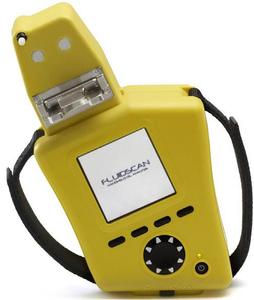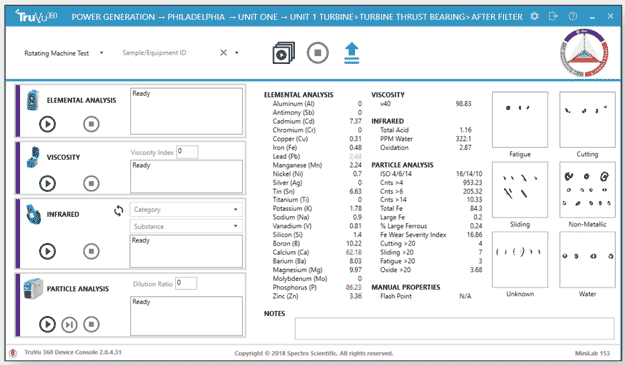
With Spectro FluidScan 1200 Today, marine engine suppliers recommend daily monitoring of the Base Number (BN) to optimize cylinder lubrication feed rate and determine the residual BN of the piston underside oil. Changes in vessel operation are driving innovation in engine monitoring .The shift to “slow steaming” and the resulting “cold corrosion” affects every vessel in operation. Increased instances of early failure due to cylinder scuffing & cylinder scaling are due to improper lubrication in constantly changing engine running conditions.
New sulfur emissions requirements are a secondary driver affecting some vessels. Running with multiple fuel types means major changes in lubrication BN to compensate for high fluctuations in acidic conditions in the cylinders.
Spectro FluidScan 1200 is the one device that will ensure your engine is running efficiently. Daily control of the cylinder oil BN at the inlet and drain is the most effective way to prevent “cold corrosion.” (Note: Wärtsilä Services technical bulletin RT-161.)
| Benefits | Features |
| Reduce lubrication oil costs |
|
| Increase component lifetime |
|
| Innovative BN measurement and maintenance |
|
| Easily upgradeable to enable oil analysis for other shipboard equipment |
|
Highlights
Large, two-stroke diesel engines are used in over 30,000 ships worldwide. Due to over lubrication, they waste in excess of US$2 billion of cylinder oil every year. This creates more than 1.25 million tons of contaminated drain oil that needs proper disposal. This over-lubrication in slow speed, two-stroke marine diesel engines can cost ship managers and owners more than $100,000 per year per ship.
Cylinder under-lubrication leads to cold corrosion and early failure of expensive engine components like pistons, piston rings and cylinder liners. Careful monitoring of cylinder oil BN allows the operator to use enough oil to prevent cold corrosion without wasting valuable oil and additives.
Recommended by the engine designer
- See Wärtsilä Services technical bulletin RT-161
- Allows quick adjustment of cylinder oil lubrication rates when entering or leaving Sulfur Emission Control Areas.
- Battery powered portable analyzer can be carried to the test site rather than having to send oil samples back to a central laboratory
- FluidScan software can store up to 5000 measurement results and export these results by .csv file. This allows the operator to track and store measurements by cylinder for their records and enables trending of measurements.
- Upgradeable software allows the user to monitor lubricating oil condition on a wide variety of shipboard equipment. The FluidScan 1230 can monitor lubricating oils for TAN, TBN, oxidation, sulfation, water and soot.
- Cold corrosion is best avoided by tightly controlling BN using a simple, easy to use, accurate analyzer like the FluidScan 1200. Measuring corrosive iron is UNNECESSARY if you properly control residual cylinder oil BN and never let it fall below 15 (Wärtsilä recommended limit).
